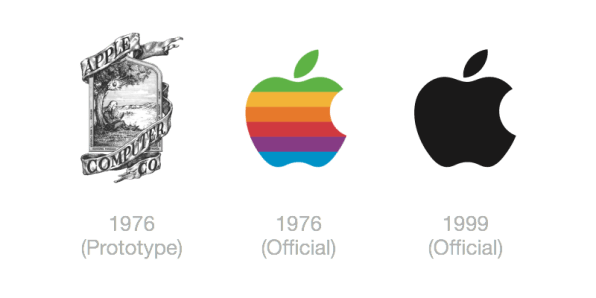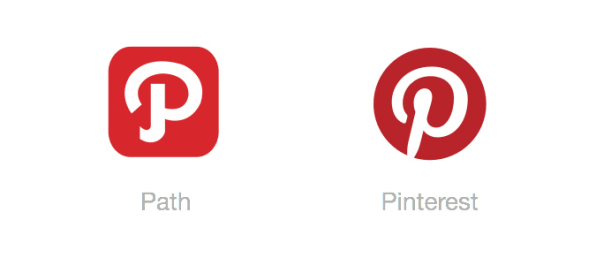What Is The Size Of A Roblox Group Logo
Your company's logo is the foundation of your business branding. It is probably the first interaction that you volition have with your customers. An effective logo tin establish the right tone and set the proper ethos. Later on years of crafting logos for different projects, I've come up with a set of questions that I always ask myself earlier delivering a new logo.
1. What emotions does the logo evoke?
Above all pattern guidelines, the most important criterion is whether the logo reflects the character of the visitor. The emotions that the logo evoke should be appropriate to the company values. For case, the Disney logo evokes a sense of happiness and optimism. The curvy, fun typeface is appropriate for a company that has been making cartoons and blithe pictures for kids. Withal, a like logo style on a sales platform would not be advisable.
Designers should understand the psychology of colors and the issue that typeface has on the blueprint of a peachy logo. For instance, green promotes relaxation and usually reflects growth, health, and the surround. Crimson, on the other hand, may evoke danger and passionate emotions. Similarly for typefaces, Garamond, Helvetica, and Comic Sans all elicit very dissimilar sentiments. Serif fonts similar Garamond promote the idea of respect and tradition, and are hence more suitable for an environs that demands integrity such as a university or a news publisher. Sans Serif fonts like Helvetica are clean and modern, and are well suited for high-tech businesses. Casual script fonts like Comic Sans are probably all-time left for fun companies such every bit toy companies. A proficient agreement of the psychology of colors, typefaces, and shapes is an of import office of making a great logo.

2. What'due south the meaning behind the logo?
Backside every groovy logo is a story. A bang-up logo is non about slapping your business name on a generic shape, which is why choosing from set-made logos is a poor thought. A logo has to have a meaningful story. A good designer first understands the civilization of the company, the tone of the product, and the vision of the business, much before embarking on ideas for the logo. The end issue of a quality logo is reflective of the philosophy and values of the company.

3. Will the logo stand up the test of time?
How volition the logo look in two, x, 20 years? Designers should avoid getting sucked into flavor-of the-month trends. Trends like ultra-sparse fonts and flat shadows are design styles that volition probably not stand the test of time. Simple is far better than circuitous. A elementary notwithstanding memorable logo can exist used in 20 years without looking dated.
A good way to test the logo is to let it sit with you lot for a while before releasing it. Some logos abound with you–the more you look at information technology, the more you like it. Some logos start to feel nauseating subsequently a while–the more you expect at information technology, the more y'all hate it. If afterward a couple of weeks with the logo yous notice it boring, the logo is probably not strong or timeless enough.

four. Is it unique? Can it be instantly recognizable?
A keen logo is distinctive, memorable, and recognizable. Even if yous accept only seen it in one case, you should still be able to remember what it looks like after a flow of time. A proficient manner to examination this is to show your logo to a friend, and so cover information technology upward and have your friend describe the logo in a calendar week. A fresh pair of eyes can be very constructive in figuring out the most memorable components of a logo.
In addition, if the logo reminds you of others you accept seen, it is non distinct plenty.

5. How does information technology look in blackness and white?
When I begin designing a logo, I ever start in black and white. Designing with this limitation first forces you to brand certain that the logo is recognizable purely by its shape and outline, and not by its color. A strong logo is one that is however memorable just by its contours.
A ane-color logo also provides the benefit of using your brand easily in multiple mediums with different backgrounds and textures.

half-dozen. Is it clear and distinct in small-scale dimensions?
Another way to make sure logos are elementary and recognizable is to scale it down dramatically. Fifty-fifty at tiny resolutions, a strong logo should even so exist recognizable at a glance. This is too a good exam to make sure that the logo is non complicated with unnecessary pattern flourishes. Here, you lot meet that the Nike, McDonalds, Twitter, and WWF logos are still very distinct at small sizes. The GE and Starbucks logos are far more cluttered, and less recognizable when they are minor.

These are non hard-and-fast rules, just guidelines for making an effective logo. It is still possible to brand a stiff, complicated logo, but empathize the trade-offs.
This article was edited and republished with permission from the author. Read the original here.
What Is The Size Of A Roblox Group Logo,
Source: https://www.fastcompany.com/3031328/the-makings-of-a-great-logo
Posted by: moorewharyince.blogspot.com


0 Response to "What Is The Size Of A Roblox Group Logo"
Post a Comment